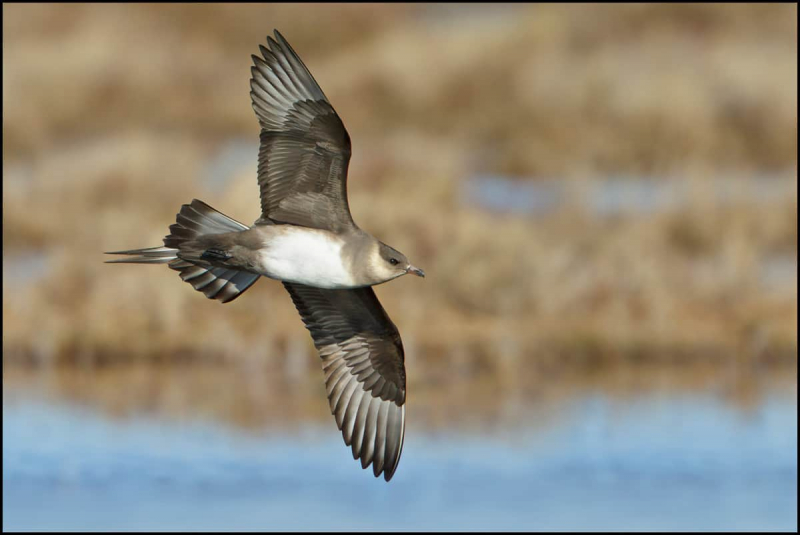Parasitic Jaeger

A seabird belonging to the Stercorariidae family of skuas is the parasitic jaeger (Stercorarius parasiticus), commonly known as the Arctic skua, Arctic jaeger, or parasitic skua. It is a migratory species that spends its breeding seasons in northern Scandinavia, Scotland, Iceland, Greenland, northern Canada, Alaska, and Siberia, and winters in the southern hemisphere. During migration during the winter, kleptoparasitism is a significant source of food for this species, which is where the name comes from.
The parasitic jaeger (German for "hunter") has the appearance of a wicked seagull with its pointed wings and dark feathers. It also behaves like one. The word "parasitic" in its name relates to a propensity of robbing other birds of their food while they are flying.
This bird is a "swashbuckling" pirate, chasing them down and stealing their prey. It actually spends the majority of its time at sea, frequently over choppy sections, "harrying other seabirds... attacking in groups, until they give up their catch," just like pirates do. It only docks to have relations. Because it breeds on northern tundras, it is referred to as the Arctic skua in Europe. Even so, it poses a threat because it eats other birds' eggs.
Kingdom: Animalia
Phylum: Chordata
Class: Aves
Order: Charadriiformes
Family: Stercorariidae
Genus: Stercorarius
Species: S. parasiticus











